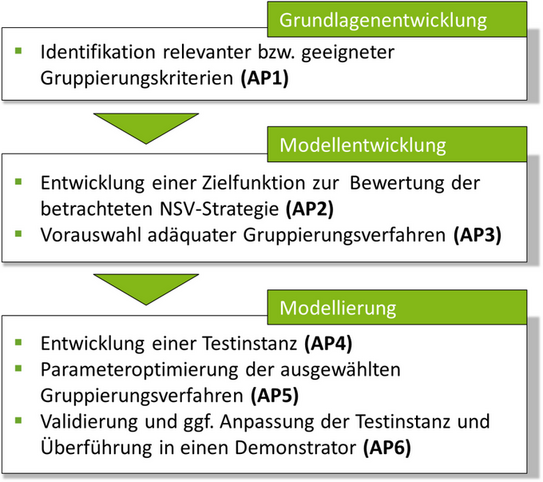variANa
variANa - Multivariate Analysis Methods for Strategy Selection in Post-Series Production
Development of a System for Strategy Selection by Multivariate Analysis Methods in the Post-Series Supply (NSV) of Electronic Assemblies
(Project duration: November 2012 to June 2014)
Problem
Increasing competitive pressure and the resulting requirements such as increased pressure to innovate, shortened product life cycles and, above all, a growing number of variants are increasingly influencing not only series production but also the spare parts business, which is already subject to many imponderables. The obligation to supply primary products with spare parts results in the necessity for manufacturing companies to ensure the availability of spare parts. In addition, the sale of spare parts after the end of high-turnover series production contributes to the company result and has a significant influence on customer loyalty. For these reasons, the significant potential of an adequately designed post-series supply is to be used to increase the company's results and thus its competitiveness. The prerequisite for this is efficient and targeted planning and design of spare parts supply (spare parts management). The post-series supply (PSS) of spare parts is ensured by means of supply strategies (see figure), which have different suitability with regard to central target variables (cost minimisation, customer loyalty, flexibility and risk minimisation) and are therefore combined into supply scenarios.
The basic selection of NSV strategies has so far only been based on qualitative approaches (typologies, decision trees). There is currently no procedure with the help of which the interdependencies of spare part characteristics and NSV strategies can be examined quantitatively and which allows any spare part spectra to be assigned to the specified NSV strategies on a quantitative basis, e.g. by means of structure-mapping procedures.

Objective
In order to reduce the effort for an efficient planning and design of the NSV, the aim of the research project is the simplified and optimised strategy selection for electronic assemblies by forming spare part classes by means of structure-mapping methods. Through this grouping, companies can easily identify those parts whose characteristics allow a comparable NSV strategy. The system to be developed for this purpose is intended to enable SMEs in different sectors to carry out an efficient and low-effort grouping of (electronic) spare parts despite a large product and/or variant spectrum. The particular challenge in grouping, oriented to the requirements of SMEs, lies in the consideration of a high number of variants with a resulting highly heterogeneous population of electronic assemblies.
Procedure

The targeted research results will be developed in stages in the form of 6 work packages (WP).
Publications
Finke Y.: Schlussbericht: variANa – Multivariate Analyseverfahren zur Strategiewahl in der Nachserie Herrausgegeben von Jochen Deuse, Lehrstuhl für Arbeits- und Produktionssysteme, Technische Universität Dortmund. Dortmund, Juni 2010
Funding Reference
The IGF project (17531 N / 1) of the Research Association for Transport Economics and Logistics (Gesellschaft für Verkehrsbetriebswirtschaft und Logistik e.V. - GVB), Wiesenweg 2, 93352 Rohr is funded by the Federal Ministry of Economics and Technology via the German Federation of Industrial Research Associations within the framework of the Programme for the Promotion of Industrial Cooperative Research and Development on the basis of a resolution of the German Parliament.


![[Translate to English:] [Translate to English:]](/storages/zentraler_bilderpool/_processed_/2/6/csm_Altes_Maschinenbau-Gebaeude_3a1a87015a.jpg)